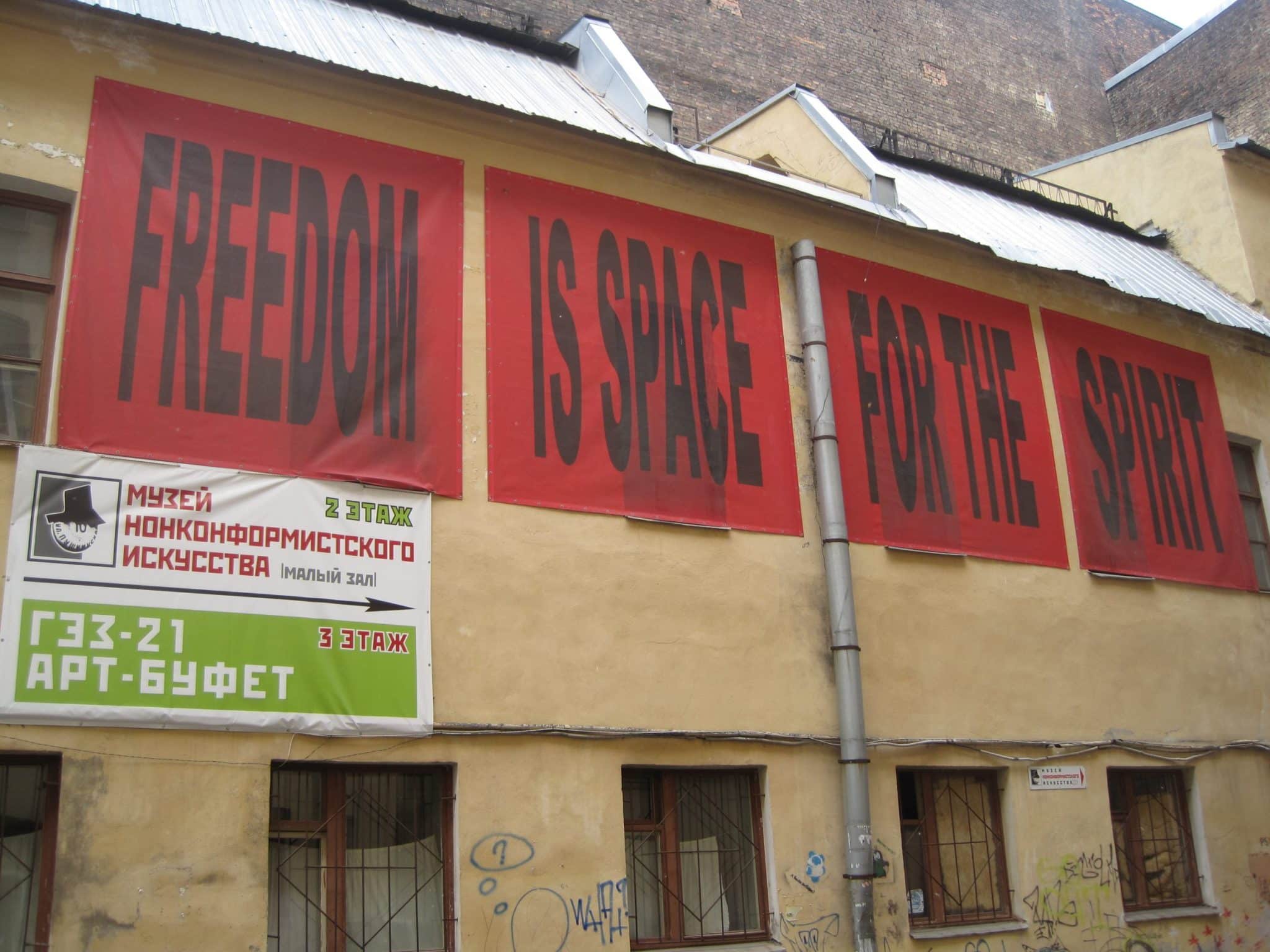One must really have the desire to find the Pushkinskaya-10 Art Center if they are to visit it. Located in an otherwise inconspicuous courtyard off Ligovsky Prospect, it hides tucked behind the bright signs surrounding the Moskovsky railway station in downtown St. Petersburg, just a bit more visible than when its entrance was located around the corner on Pushkinskaya Street. This particular art center has not received much attention from academics or journalists, and the residents of the center do not make it easy for visitors to navigate, either, offering an overwhelming variety of galleries and points of interest to visit. In short, the Pushkinskaya-10 Art Center is not for the faint of heart, yet as an art space, it reveals some of the secrets that were hidden about art during the soviet era, and serves to remind us of the necessity of physical space in the creative process for artists.
Although the Puskinskaya-10 Art Center is a point of interest in St. Petersburg it is not one that is accessible to all, physically or intellectually. In an interview I held with the art center’s co-founder, Sergey Kovalsky, he emphasized that, although the site appears in some guidebooks and site-seeing pamphlets, the space is not entirely public, and is not easily understood by the average tourist.[1] Unlike the works in the endless galleries of the Hermitage or the Russian Museum, the pieces created in secret by unofficial artists require a special understanding of the era and movements to truly grasp their significance. Pushkinskaya-10 simultaneously tells its own story of unofficial art and represents the many nonconformist art movements of the twentieth century, both successful and unsuccessful, that expressed discontent with the soviet system through artistic media. In the years since its establishment at the same time of the Soviet Union’s dissolution, the site has served as a home to artists both young and old, as an archive of “dissident,” “forbidden,” “nonconformist,” and “unofficial” art,[2] and as a tribute to the legacy of unconventional art in twentieth century St. Petersburg. This chapter in Russia’s art history is significant because the art remains controversial, even twenty years after the dissolution of the soviet regime.
Monika Bernotas also created a video documentary based on her research. Watch it above.
Despite the fact that the Soviet Union has long since dissolved, official and unofficial art remain distinguishable and some works are prevented from being displayed publicly.[3] For this reason, the Pushkinskaya-10 Art Center exists as a testament to the emergence of successful sustentation of unofficial art from the Soviet Union to today, by giving aspiring and established artists a space in which to create and share their work with one another and with the public. Further study of this art cooperative allows us to observe how the operations of the center have changed, and understand the connection between Russia’s current art culture and the alternative art culture of the late soviet era.
Russia has a long history of restrictive measures taken to limit artistic production, dating through both the czarist and soviet time periods. Strict limitations were placed on artists, preventing them from creating and displaying works that did not conform to the accepted method, and artists who refused to comply were sentenced to exile and, in some cases, death. The soviet era, in particular, created an uncomfortable environment for artists. In 1932 the soviet leadership adopted socialist realism as the official method of soviet art. Any creative product was subject to the limitations of this method, including plays, films, books, sculpture, and all fine arts. Socialist realism not only sought to glorify the virtues of soviet collective labor, but also, simultaneously denounced the evils of capitalist culture. In literature and cinema, socialist realism manifested itself in stories, for instance, in which a socialist mentor guides a spontaneous youth to recognize the errors of his ways, and glorify the ideals of socialism.[4]
In visual arts, realism employed techniques that attempted to capture images of pride in the soviet way of life, while actually idealizing the images, and subsequently used them in propaganda and every aspect of illustrated life from children’s stories to cookbooks.[5] All artistic production, notably the many portraits of party leaders like Stalin and Lenin, was commissioned and required to conform to the socialist realist aesthetic method. Additionally, sculptures and monuments in the socialist realist style took up physical space in the cities of the Soviet Union, giving mass and volume to the regime’s doctrine, making soviet socialist realism truly ever-present in the lives of the urban citizens. In this way, the soviet elite attempted to permeate the lives of the citizens with socialist ideology in their physical surroundings, and allowing no space to be private. An example of this is Vera Mukhina’s statue in Moscow, The Worker and the Kolkhoz Woman. The statue, originally constructed for the 1937 Paris World Fair, now towers nearly 200 feet above VDNKh, a popular park and exhibition center in northern Moscow. The statue also became the iconic logo of the major soviet film company, MosFilm, and was shown at the start of the majority of films seen in the Soviet Union. Despite the encompassing nature of socialist realist art, the actual tenets were never documented in a way that made them easy to follow. For that reason, artists were often unclear of their compliance with the rules.
Due to the lack of clarity in the official method, many artists continued to create in their own style, risking becoming targets of official persecution. Fortunately, artists were seldom persecuted for their art alone; rather, art was banned not due it’s content, but because its author had associated with dissidents, had expressed dissent, or had fallen foul of an influential official. Despite these limitations, artists continued to create art of their own, outside the official method. When the implementation of socialist realism began in the early 1930s many artists continued to create in the avant-garde style, disregarding the official method of the Soviet Union. These artists were forced to work on their unofficial art as privately as they could with their own resources while simultaneously paying the bills by working as official book-illustrators or in other occupations.[6]
Working as a book illustrator was a particularly convenient occupation, because it gave the artist access to materials that were not widely available. Those who worked outside of the art industry had difficultly obtaining supplies to create their works if they were not associated with an official art guild. Furthermore, without official recognition, they had no access to space in which to create or display their work. Unless they were associated or connected with such art guilds, they were severely limited in time and resources, and, most importantly, private studio space in which to create. Without space, they would find it difficult to create, let alone hide, the art with which they confronted the state-imposed limitations.
Artists who were not included in official art guilds craved connections with other artists, for the purpose of sharing their work and circumventing the state. For that reason, they established some of the most important unofficial networks in St. Petersburg in the 1970s and 80s, specifically, the Brotherhood of Experimental Exhibitions and the Brotherhood of Experimental Exhibitions, established in 1975 and 1981, respectively, and which later consolidated to form the organization behind Pushkinskaya-10.[7] Such organizations were established outside of the official unions and guilds of soviet artists, meaning that they did not reap any state benefits available to official organizations, and had to conduct their operations as privately as possible. Such secret organizations were not regulated by the state, and, therefore, not tolerated.
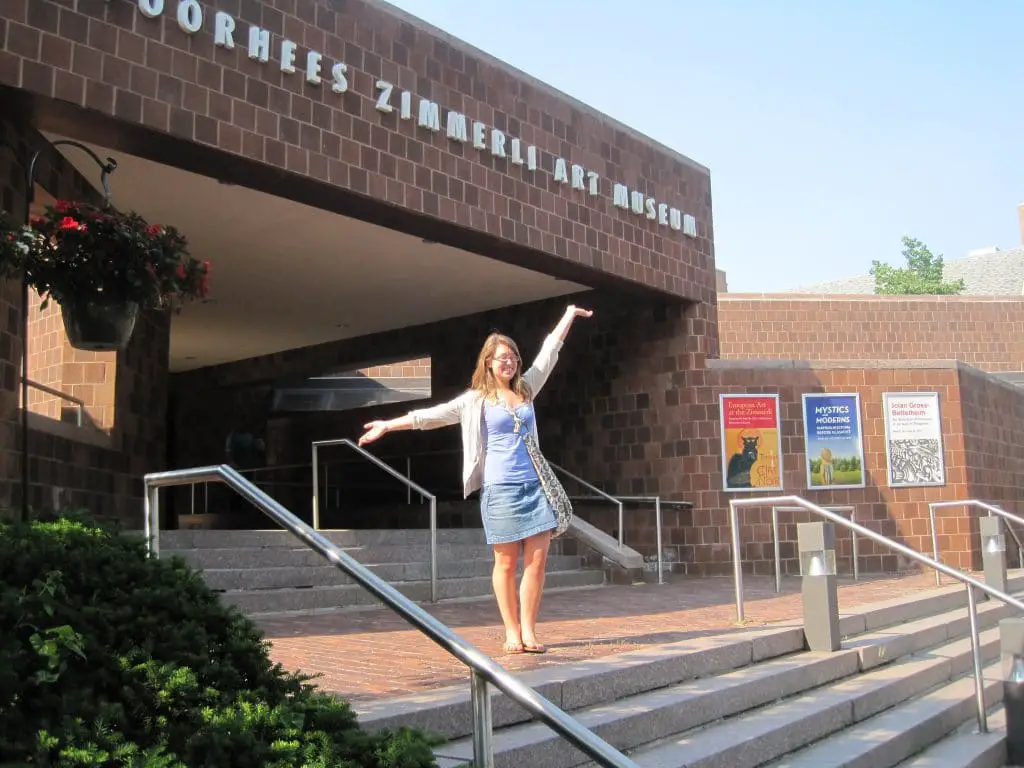
Operating in secret and acknowledging the risks at hand, the members of these brotherhoods benefited from networking with their fellow-dissidents and used them as an outlet to share their work in secret apartment exhibitions. It was also through these networks that artists made contact with international art collectors and dealers, whom they incorporated into their unofficial syndicate. One such collector was Norton Dodge, whose collection of nonconformist soviet art can now be seen at the Zimmerli Museum at Rutgers University. His collection was built up over the course of ten visits to the Soviet Union from the 1970s through Perestroika, and includes works by artists, such as Ilya Kabakov, Vitaly Komar, and Alex Melamid, who have, through his efforts, become some of the most widely-recognized and prosperous unofficial Russian artists. Those who were targeted by soviet authorities became recognized in the west not only as artists, but also as dissidents against the soviet regime through these private outlets to the west.
Furthermore, it was out of these unofficial organizations that unofficial exhibitions began to emerge in secret, and then in public. Art served as both a type of therapy and an act of dissent for these artists, whether or not the subjects of their art were explicitly anti-soviet. For example, the art of Boris Koshelokhov, which draws greatly from early 20th Century Russian avant-garde and fauvism, depicts many natural and neutral themes.[8] Because his art strayed from the tenets of socialist realism, he was tagged as a nonconformist, and the authorities kept a close watch on him.[9] By working as a janitor, keeping his nonconformist art to apparently neutral themes, and maintaining discreet relationships with compatriot artists in the Society for Experimental Exhibitions he was able to avoid arrest. He lives and thrives today in the Art Center at Pushkinskaya-10 and is a well-respected artist of the, ironic, nonconformist brand.
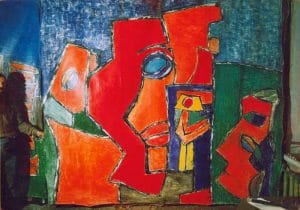
In 1989, at the height of Gorbachev’s Perestroika, the members of these organizations, realizing their need for a space of their own, joined their forces to create the Free Culture Society and moved into the house at Pushkinskaya-10 in Leningrad. In a personal interview, Sergey Kovalsky, the founder of the space, told of the day he recognized the abandoned building at that address as a potential home for all the artists who did not have their own spaces to create, much like the establishment of the SoHo district of New York. Walking with a small group of artist-friends, he described their need for a home, and pointed out the crumbling building as something that would work just as well as any other building; however, its location on Pushkinskaya Street made it particularly ideal, since “Pushkin is [our/Russia’s] everything.”[10] The building had been condemned and was in a queue for remodeling by city. When Kovalsky approached the authorities to say he would take the building as it was, they were obliged to give it to him to avoid the costs of renovation, especially as the soviet state crumbled.
The building, dubbed the Pushkinskaya-10 Art Center, managed by the Free Culture Society, has been operating as an art cooperative since the dissolution of the Soviet Union. Aside from apartment and studio spaces for over thirty artists, the center boasts approximately ten museums and galleries, as well as studios for performance art, a shrine to the Beatles (who were influential for all generations of soviet dissidents) two cafés and a record store. The space serves as a creative home for musicians, filmmakers, photographers, and, of course, the painters and sculptors who established it. Now, the artists refer to the Art Center as “an island of communism,” as its operation and maintenance are taken on with a collective attitude. In fact, the artists and residents still consider themselves “nonconformists,” despite the fact that the Soviet Union has long since dissolved and the term as it was once used has lost its meaning. The term was once used to describe dissidence to the soviet state alone; now it expresses their resistance to conforming to the ideals of mainstream cultural values in general. Thus, when the government ceased to be socialist, the artists at Pushkinskaya-10 continued their rebellious streak, some even reverting to socialist values.
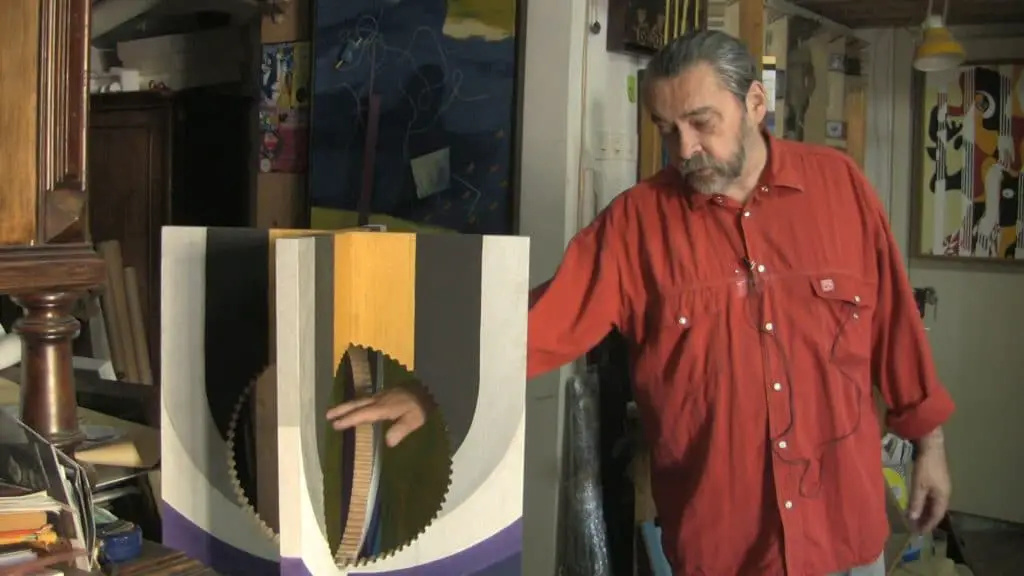
Kovalsky, the center’s co-founder, has a unique view of the world, describing it as a “Parallelosphere.” The concept, although difficult to understand at first, makes a certain degree of sense, geometrically and philosophically speaking. While we, as human beings, live on the sphere of the earth, we consistently find parallels between our creator, ourselves, and that which we create. His goal is to expand the Parallelosphere to include all of mankind through cultural parallelism throughout the world, which is, in essence, the mission of Pushkinskaya-10.[11]
One of the many unique things about the center is the varied integration of public and private spaces together. While each resident artist has his own space to use for living and creating, the exhibition space spills out into shared areas, including hallways, stairwells, elevators, walls and ceilings. Visitors are welcome to participate in the creation by adding to graffitied areas while, in most cases, respecting that which has already been created. Some residents of St. Petersburg, who come to visit the center, say that they like the idea of the space particularly because of its accessibility.[12]
The art center has been constantly working towards several goals ever since its establishment; one of the most important being to integrate Russian contemporary art to the new world culture.[13] To do this, the art center brings in foreign exhibitions, and displays work of their own abroad. One such collection brought to the center was that of a German artist, Kurt Flekenstein, whose exhibition featured an installation that describes the center’s operation: “Freedom is Space for the Spirit.” A banner with this slogan now hangs in one of the courtyards in the Art Center. The quote, which has blended into the backdrop of the courtyard for many of the residents, still has some resilience. Kovalsky relates to the quotation, and, in an interview, told me that without space in which to act, the spirit can do nothing, and that freedom has potential in all spaces.[14] Once the artists could do what they liked with in space, they had the freedom to open up to the world and create beyond their previous limitations.
Along with bringing foreign artists to Russia, the art center’s residents look for opportunities to share their creations outside of their own space in a way that was difficult during the soviet era. Of course, before the 1990s, their only public outlet had been in small apartment exhibitions or abroad with the help of foreign collectors and artists, like aforementioned Norton Dodge. In the post-soviet era, the artists associated with the Free Culture Society share their work in public exhibitions in Russia, where they were previously restricted from displaying. One exhibition of note, called “St. Petersburg Free Culture in Museums of Russia,” made a 2011 tour of the cities of Russia, before arriving home to St. Petersburg in July of that year. Both during the soviet era, and in the years since nonconformist artists who would become the founders of Pushkinskaya-10 wanted to exhibit their work in the Peter and Paul Fortress, but were thwarted by the authorities. After years of planning and bargaining with authorities this travelling exhibition has made its final stop in the Peter and Paul Fortress’s Nevsky Gate Gallery, bringing its journey full circle, both around the country, and in time.[15]
The significance of such an exhibition, taking place in the cradle of St. Petersburg, was not unintentional. For the artists of the Society of Free Culture, finally displaying their work in this space shows St. Petersburg’s, and Russia’s, acceptance of the work they did illegally during the soviet reign. The nonconformist art movement began in 1976 when one of the underground artists, Yuli Rybakov, painted on the walls of the fortress: “You may crucify freedom, but the human soul knows no shackles.” Rybakov was convicted and sentenced to six years of prison for his artistic and political performance. The Pushkinskaya-10 art community views Rybakov’s artistic act as one of the stories of the origin of their movement. Thus, the exhibition inside the fortress, where Rybakov’s and other artists’ works are displayed, has a special significance for the art center community. Although the artists are still considered obscure and limited in many of their exhibitions, there is no question of their gaining significance in the larger scope of the history of art in Russia today.
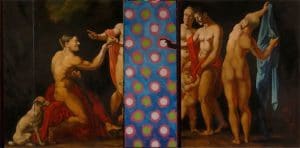
Russia’s capital, Moscow, always had an aggressive and assertive artistic community during the soviet era, where authorities often broke up exhibitions they held in apartments and public squares. Conversely, the St. Petersburg artistic community was more discreet and structured, leaving much of their work to be discovered only now, in the period after the soviet reign.[16] As attention on the nonconformist art movement grows, the future of the Pushkinskaya-10 Art Center remains to be seen. The resident artist population is aging, and the funds to support the institution are running low. The Society of Free Culture, which runs the Art Center’s space, puts a great deal of effort into maintaining their stance that art should be free. For this reason, the art center functions almost entirely on donations and grants, while admission to the museums and galleries remain free of charge, despite the fact that maintaining such an institution in downtown St. Petersburg is costly.
Furthermore, keeping in mind the lofty cultural confidence of St. Petersburg, Russia’s “cultural capital,” new galleries and projects are constantly appearing, supporting artists in their endeavors to create. The Novyi Muzey,[17] located on Vasilievsky Island, boasts a collection of avant-garde art, ranging from the early 20th century to the present, giving a brief overview of Russia’s avant-garde history in a noticeably less confusing exhibition space. Additionally, a few blocks down Ligovsky Prospect from the Pushkinskaya-10 Art Center, the Loft Project Etagi[18] is establishing a similar project, targeting a younger population and emphasizing its accessibility, and even offers meeting halls, a hostel, and rentable exhibition space. Pushkinskaya-10 was established as a space for artists to live and create, but has become an exhibition of their era. Competing with young, organized, and technologically-savvy institutions with similar areas of interest, the question now is whether or not the Pushkinskaya-10 Art Center will be able to survive in the future of Russian art.
Some of the resident artists are reluctant to answer this question when asked. For example, Boris Koshelokhov says that he lives and creates only “here and now.”[19] The time and space in which he creates is entirely transient, and it is difficult for him to consider the future. This is also evident in his creative process, and his ability to churn out several paintings in a day. His fear of the future is manifested in his insistence on living entirely in the present. Fortunately, his art generates enough revenue to sustain him in his small hovel of an apartment, which smells of coffee, turpentine and cigarettes.
Aleksandr Bashirov, a filmmaker and actor whose film company, Deboshirfilm,[20] has its headquarters in Pushkinskaya-10 has a much different outlook. He described his first visit to the space as visiting a garbage pile. Distressed over the disorganization and less-than-healthy lifestyle of the resident artists, he seems to think that without proper care, the art center will return to its original state – a trashed abandoned building. Unfortunately, he offers little constructive feedback as to how this fate can be prevented. He was particularly troubled by the theft of a television, which he placed in a public restroom down the hall, which destroyed his dream of a “kino-toilet.” As punishment, he threatened to take a stick and hit his delinquent neighbors over the head for being no more than lazy artists.
Still others, like Valentina Kirichenko, the Art Center’s International Programming Director, are loftily optimistic, saying that Pushkinskaya-10 offers much more than other galleries. She describes the center’s unique quality of the creative space being shared with the public, particularly with exhibitions and studios transcending space to flow into the hallways, unrestricted by walls. Armed with a computer and a small budget for print marketing, the art center seems to find the people who are interested in their mission, particularly the younger population, as it begins to play a larger role in the operations of the art center. Older generations, who are reluctant to embrace the legacy of nonconformist art, are quickly fading out of the picture, and it is up to the youth to carry mantle of this historic art movement, she says.[21] It would seem that although the younger generation are becoming increasingly active in forming their own spaces, they risk forgetting their history, so to speak.
To get to Pushkinskaya-10, one must know the way, in both a literal and figurative sense. Across Ligovsky Prospect from the Moskovsky Railway Station, the entrance to the art center can be found through the courtyard to house number 53. However, finding the physical space will not help you to access the nuances of the lost era of art. The artists who reside there risked their lives to create during the soviet era, and continue to resist conformity, to create, and to live. By adopting this space as their own, they have created an unofficial cooperative island, on which the memory of unofficial art lives on. Pushkinskaya-10 stands and, with love, creativity, and perseverance, will continue to stand as a testament to the courage of nonconformist artists during the soviet Era. The Art Center as a space, and the unofficial art movements which it represents, reminds us that people, to create, need freedom, and freedom means having space in which to create.
Works Cited
Alparova, I.G. Drugoe iskusstvo. (Other Art) Moscow: Khudozhestvennaia galereia, 1991.
Baer, Brian James. “Other Russias: Homosexuality and the Crisis of Post-Soviet Identity.” 2009. Palgrave Macmillan. New York, NY.
Baigell, Matthew and Renee. Soviet Dissident Artists: Interviews After Perestroika. New Brunswick, NJ: Rutgers University Press, 1995..
Bashirov, Aleksandr. Personal Interview. 20 July 2011.
Clark, Katerina. The Soviet Novel: History As Ritual. Third Edition Bloomington: Indiana University Press, 2000.
Grigoryev, Apollon. “ Взгляд на русскую литературу со смерти Пушкина.” (A View of Russian Literature Since Pushkin’s Death) 1859. <http://az.lib.ru/g/grigorxew_a_a/text_0510.shtm> Accessed 1 August, 2011.
Kirichenko, Valentina. Personal Interview. 6 July 2011, 11 July 2011
Koshelokhov, Boris. Personal Interview. 6 July 2011
Kovalsky, Sergey. Personal Interview. 5 July 2011, 11 July 2011
Translated by Kirichenko, Valentina. “Apartment Exhibitions of Underground of Russian Avant-Garde Art,” “Chronicle of Unofficial Art in Leningrad,” “From Self-Expression to Self-Realization: The Free Culture Society,” “The Parallelosphere of the Art Center ‘Pushkinskaya-10.’” 2009. Pushkinskaya-10. St. Petersburg. <http://en.p-10.ru/texts/>
Kovalsky, Sergey, Evgeny Orlov, and Yuri Ribakov. Art Center “Pushkinskaya-10” – Parallelosphere. 1989-2009. St. Petersburg: Pushkinskaya-10 Art League. 2010.
Lindey, Christine. Art in the Cold War: From Vladivostok to Kalamazoo, 1945-1962. New York: New Amsterdam Books, 1990.
Neumaier, Diane. Beyond Memory: Soviet Nonconformist Photography and Photo-Related Works of Art. New Brunswick, NJ: Rutgers University Press, 2004.
Rosenfeld, Alla and Norton T. Dodge (editors). From Gulag to Glastnost: Nonconformist Art from the Soviet Union. New Brunswick, NJ: Rutgers University Press, 1995.
Ross, David A., Tacoma Art Museum, Mass.) Institute of Contemporary Art (Boston, and Des Moines Art Center. Between Spring and Summer: Soviet Conceptual Art in the Era of Late Communism. 1st MIT Press ed. Tacoma, Wash. : Boston, Mass. : Cambridge, Mass.: Tacoma Art Museum, 1990.
Shekhter, Tatyana. “The Non-Official Art of St. Petersburg (Leningrad).” <http://en.p-10.ru/texts/shekhter/>
Schlatter, N. Elizabeth., et al. Prostranstvo Svobody: Kvartirnye Vystavki V Leningrade, 1964-1986 = The Space of Freedom : Apartment Exhibitions in Leningrad, 1964-1986. Richmond, VA: Seattle, WA: University of Richmond Museums, 2006.
Sudnik, Nikolai. Personal Interview. 20 July 2011
Sokolova, Natalya. Personal Interview. 18 July 2011
[1] Kovalsky. Personal Interview.
[2] Different terms describing the art of the Soviet Union have been coined, especially since the Soviet Union’s dissolution. “Dissident” art describes art that is specifically against a particular political ideology. “Forbidden” art can be used to describe any art that is unacceptable to the regime at hand, in this case, the Soviet Union. “Nonconformist” art can be used to describe any art that is made by people who identify themselves as not conforming to the system in power. My favored term is “unofficial” art, which describes the movement’s existence and addresses the fact that, although the Soviet authorities were aware of its existence, they were often helpless to confront it publicly. Although each artist chooses to associate his or herself with a different category, the concept remains generally the same.
[3] One situation of note is the Sots-Art travelling exhibition of 2006. The Sots-Art movement, which was based in Moscow during the late Soviet era, combined elements of Soviet propaganda and pop-art style from the United States. After the collapse of the Soviet Union, the style remained popular. However, when an exhibition of the works was to begin an international tour in 2006, at the last minute the Russian government held back several pieces from departing, despite the fact that there was no written law to explain why it should be so, an example being a photograph showing two Russian police officers embracing in a kiss in a birch forest. Sots-art remains relevant today because it satirizes not only the Soviet past, but also contemporary Russian society.
[4] Clark 27, 255-260
[5] Книга о вкусной и здоровой пище (the Book of Delicious and Healthy Food) was a classic Stalin-Era cookbook, that outlined the basics of the Soviet Russian diet, including approximately seven recipes for borscht, as well as how to serve caviar. Published in starving country the book became an epitomy of Soviet ideological hypocrisy.
[6] Baigell 374. Interview with Elena Figurina.
[7] Koshelokhov. Personal Interview.
[8] The turn of the century brought the development of many new art movements in Europe and North America starting with impressionism and its modernist descendants, such as fauvism. These works emphasized feeling and impulse, rather than exact study of a space. Such artistic movements were thought vulgar by many critics; however, the art emerged from a politically and culturally volatile time, when it was necessary for artists to express their stance through art.
[9] Koshelokhov. Personal Interivew.
[10] Kovalsky. Personal Interview, citing the famous line about Pushkin by Russian nineteenth century literary critic Apollon Grigoryev.
[11] Kovalsky, “The Parallelosphere of the Art Center ‘Pushkinskaya-10.’”
[12] Sokolova. Personal Interview.
[13] 20th Anniversary Art Center Pamphlet.
[14] Kovalsky. Personal Interview.
[15] Kovalsky. Personal Interview at Peter and Paul Fortress.
[16] Rosenfeld 133
[17] Новый Музей http://www.novymuseum.ru/
[18] Лофт Проект ЭТАЖИ http://www.loftprojectetagi.ru/en/about/
[19] Koshelokhov. Personal Interview.
[20] “Дебошир Фильм” http://www.deboshirfilm.ru/
[21] Kirichenko. Personal Interview.


